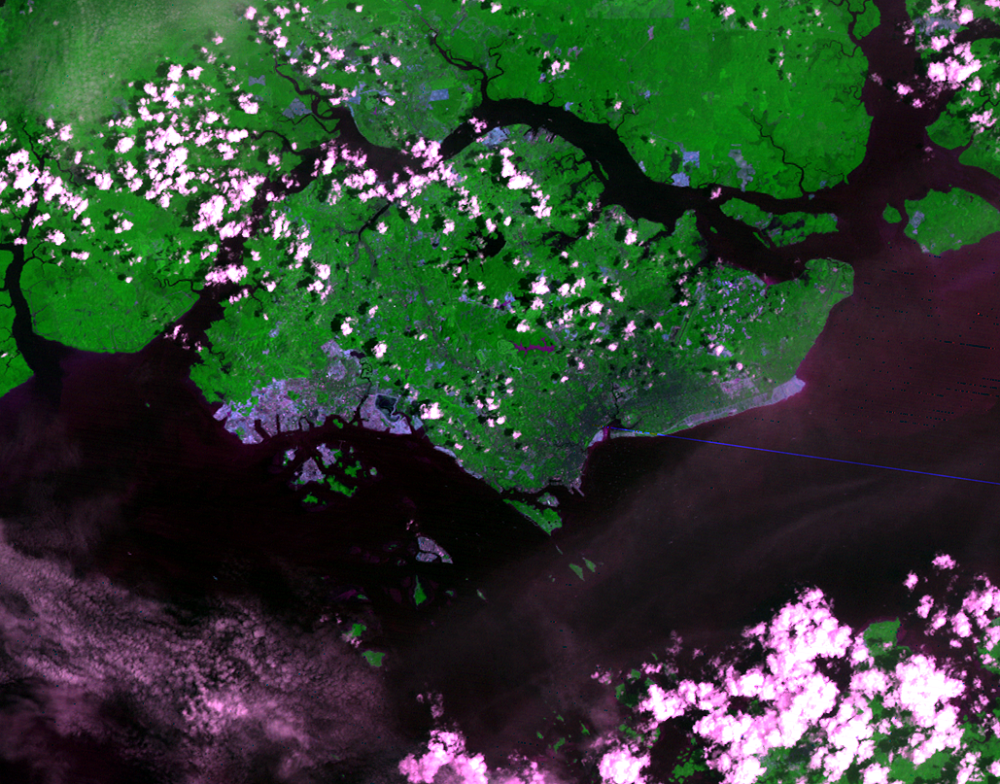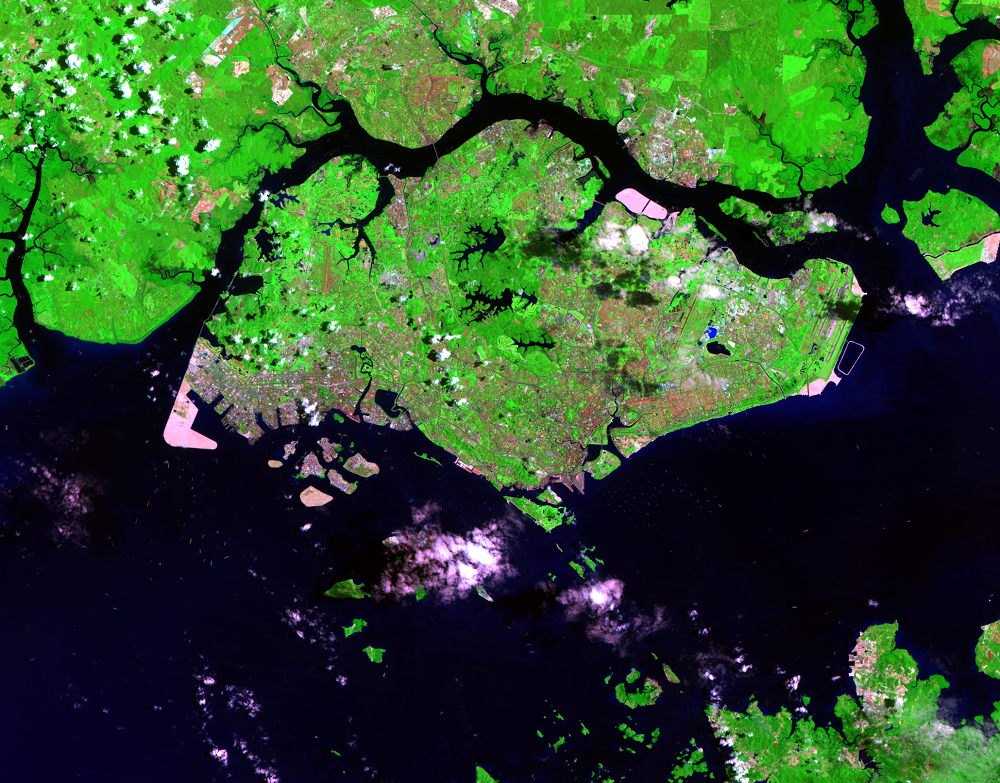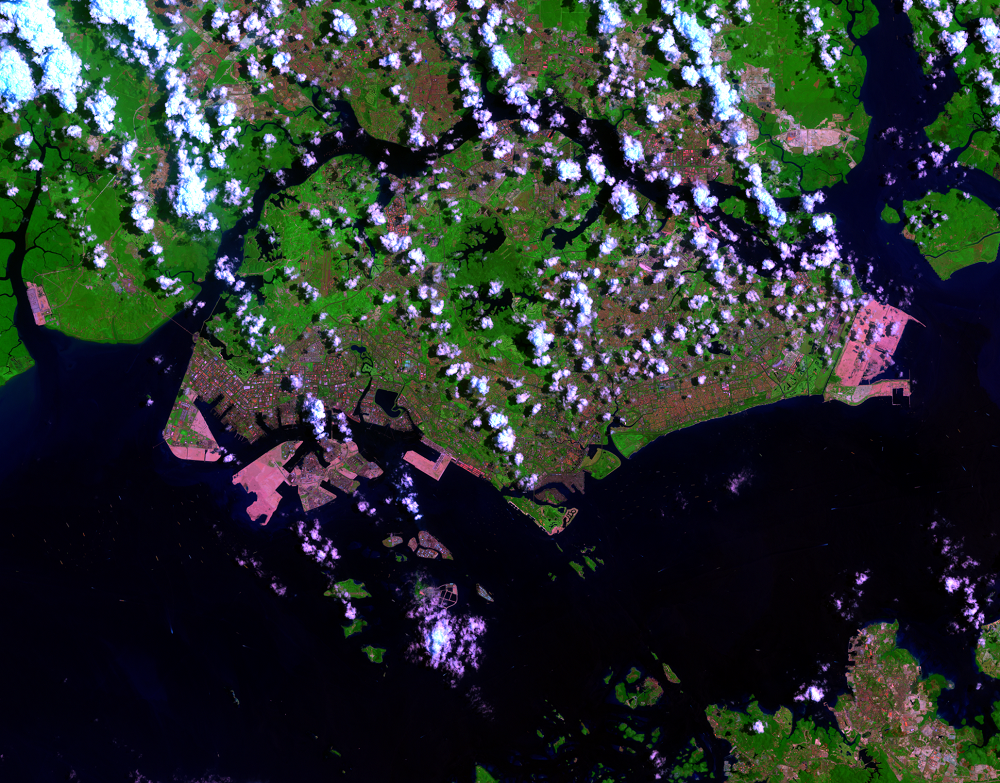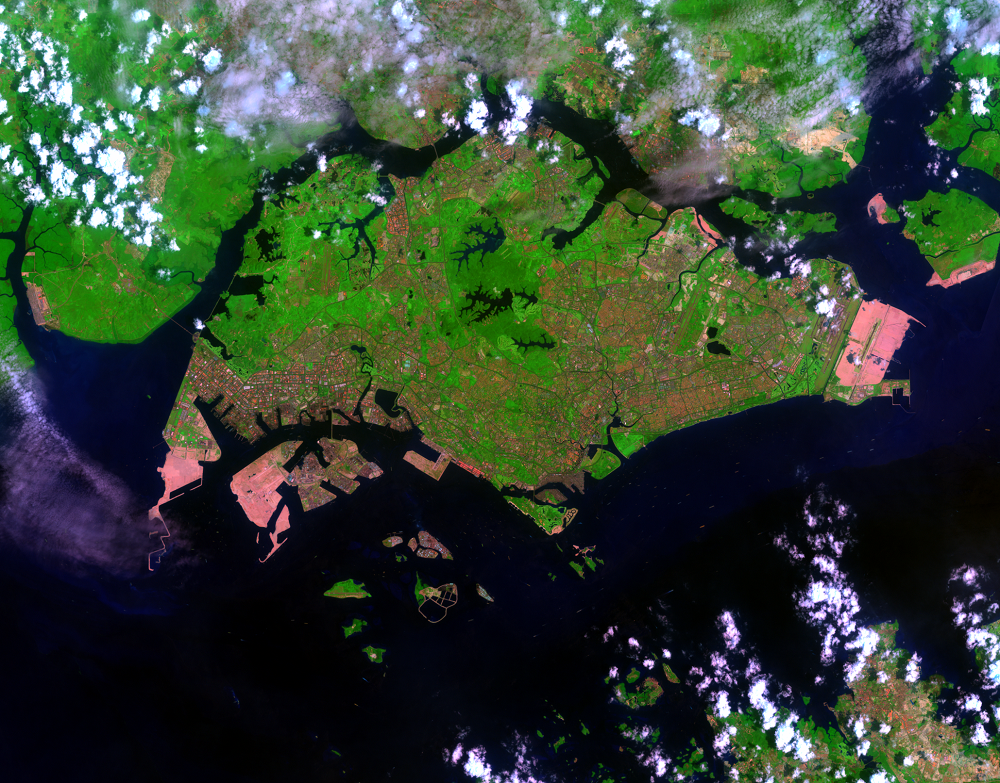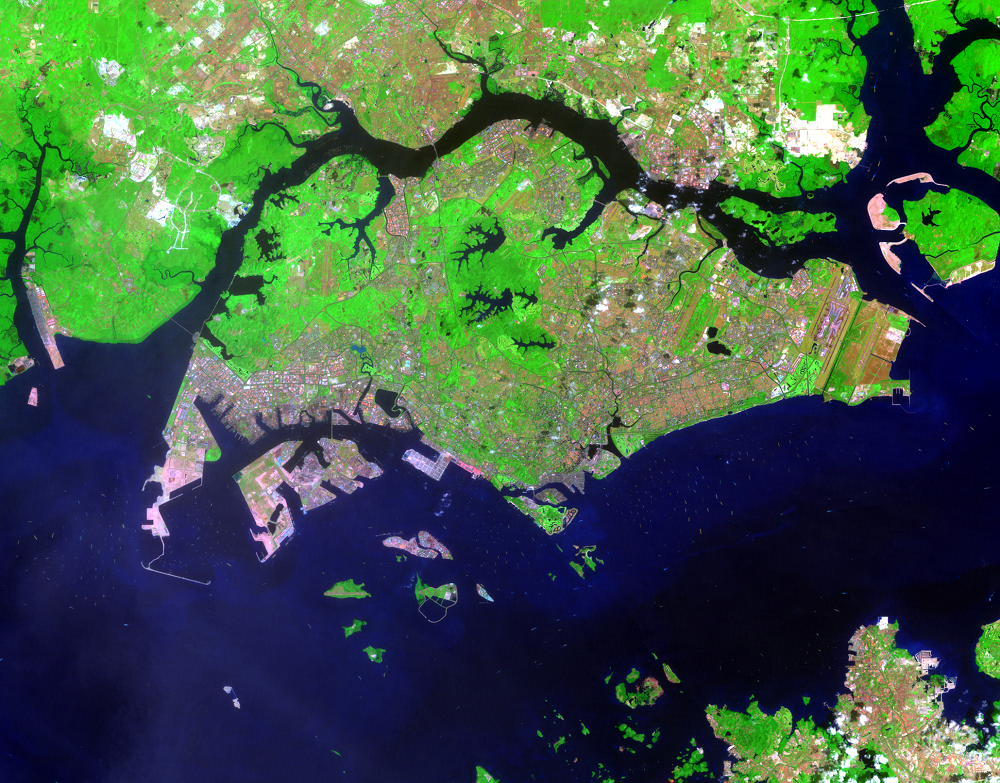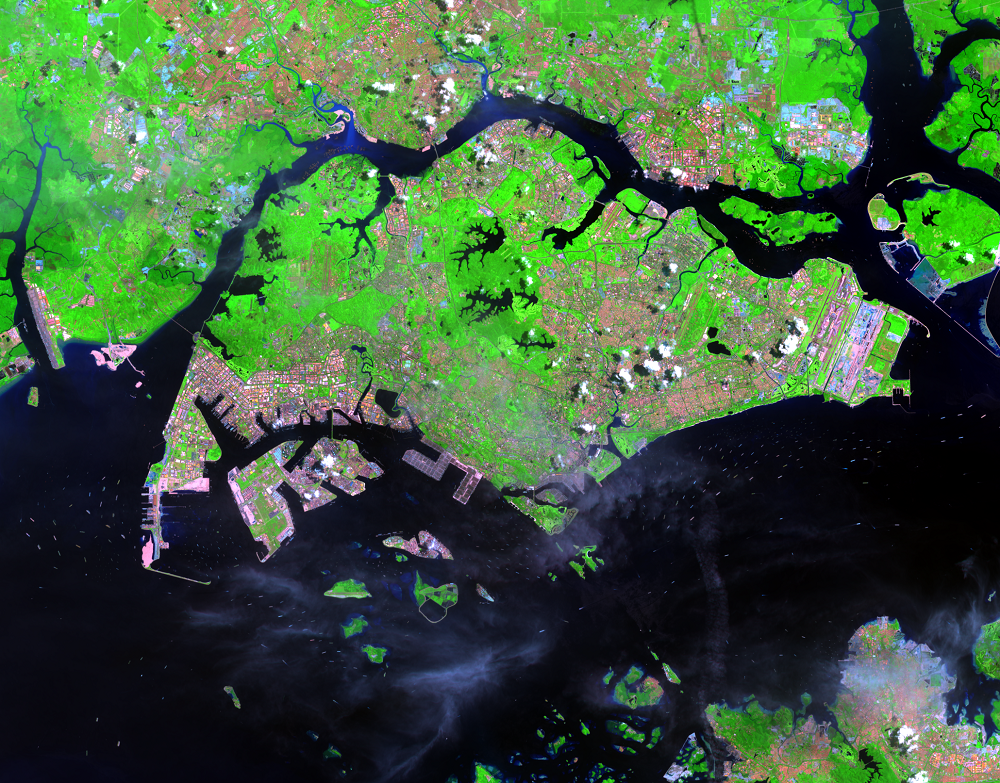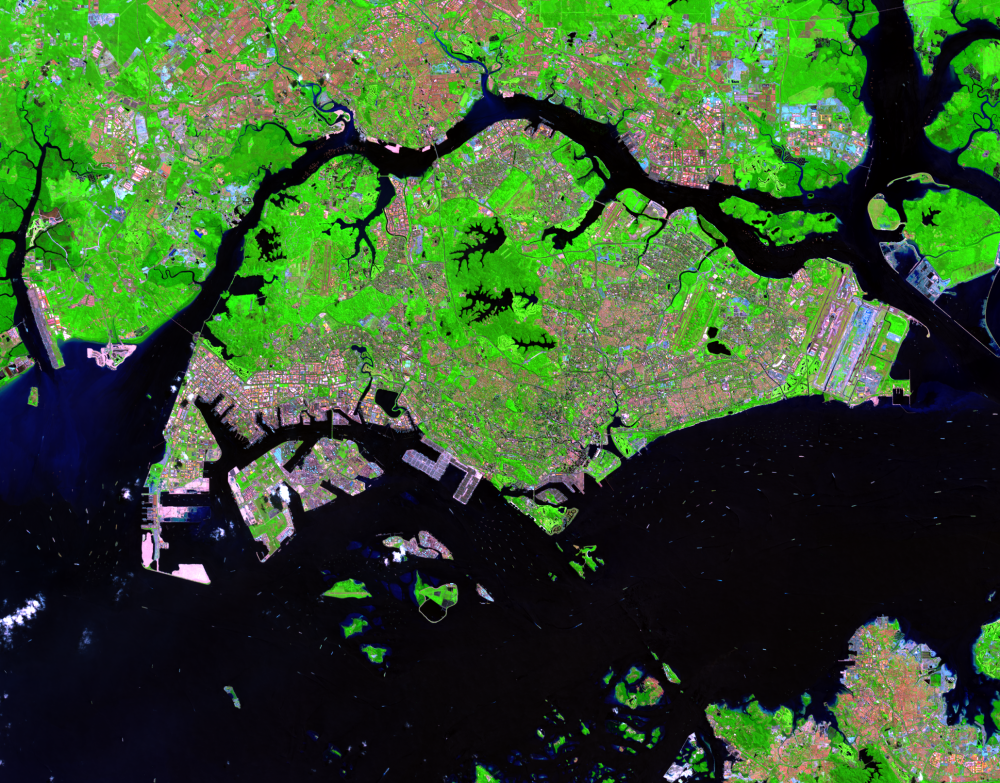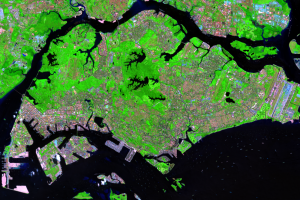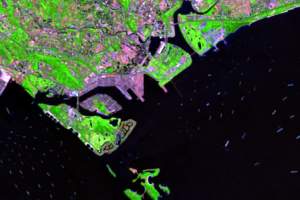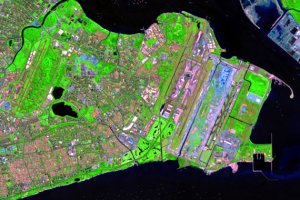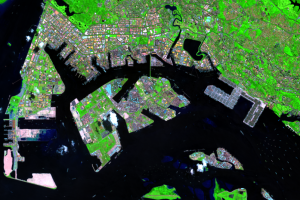
Singapore
Earth Resources Observation and Science (EROS) Center - Earthshots
“Buy land,” a wise man once said. “They’re not making any more.” Not so in Singapore.
These images show the physical growth of this island city-nation just off the mainland of Southeast Asia. Between 1973 and 2018, the island expands where Singapore created new land for airports, shipping, and oil refineries. In all, the government of Singapore has planned to increase the island’s original area by as much as 25 percent.
In these images, vegetation is green and water is blue-black. Bare soil and pavement look almost pale or pink. Singapore is often cloudy; these images, some of them with popcorn clouds, are among the clearest in the archive.
Singapore was rainforest, fringed by mangrove swamps, with about 150 people when the British acquired it as a colony in 1819. It soon thrived as a trading city because it lay sheltered from storms, right at the bottleneck where ships passed from the Pacific to the Indian Ocean.
In 1965, when it became independent, Singapore had almost 2 million people, crowded slums, negligible natural resources, and an economy dependent on shipping. But Singapore’s one-party government used this sense of crisis to build a wealthy, modern city by using strict controls. They lowered the birth rate, moved nine of ten Singaporeans into new high-rise condominiums, and developed new banking and manufacturing business while expanding shipping (2) even more. By 2019, Singapore had almost 5.7 million people and a high standard of living.
Imagery
Downloads
CIA, 2012, Singapore: The World Factbook, available only online at https://www.cia.gov/library/publications/the-world-factbook/geos/sn.html. (Accessed March 6, 2012.)
Glaser, R., Haberzettl, P., and Walsh, R.P.D., 1991, Land Reclamation in Singapore, Hong Kong, and Macau: Geojournal v. 24, no. 4, p. 365–373.
Hiebert, M., 1997, On the Offensive—Singapore's Rules May be Strict, but they Do Curb Urban Blight: Far Eastern Economic Review, 6 Feb. 1997, p. 39.
Hilton, M.J., and Manning, S.S., 1995, Conversion of Coastal Habitats in Singapore: Indications of Unsustainable Development: Environmental Conservation, v. 22, no. 4, p. 307–322.
New Civil Engineer, 1998, Geotextiles Secure Singapore Shore: New Civil Engineer, available online at http://www.nce.co.uk/geotextiles-secure-singapore-shore/659362.article. (Accessed March 5, 2012.)
Perry, M., Kong, L., and Yeoh, S.A., 1997, Singapore: A Developmental City State: London, Wiley, 339 p.
Rhodes, A.K., 1995, Two of Singapore's Refiners Expand Despite Lack of Land: Oil and Gas Journal, v. 93, no. 33, available online at http://www.ogj.com/articles/print/volume-93/issue-33/in-this-issue/refining/technology-two-of-singapore39s-refiners-expand-despite-lack-of-land.html.
Sien, C.L., Rahman, A., and Tay B.H., D, 1991, The Biophysical Environment of Singapore: Singapore, Singapore University Press, 219 p.
Short, D.E., 1988, Planning Agriculture’s Last Stand in Singapore: Geography, v. 73, no. 4, p. 357–359.
Turnbull, C.M., 1989, A History of Singapore 1819–1988 (2nd ed.): Singapore, Oxford University Press, 388 p.
Vreeland, N., and Maday, B.C., 1977, Area Handbook for Singapore: Washington, DC, GPO, 216 p.
Wong, P.P., 1985, Artificial Coastlines—The Example of Singapore: Zeitschrift fur Geomorphologie, Supplementband 57, p. 175–192.

